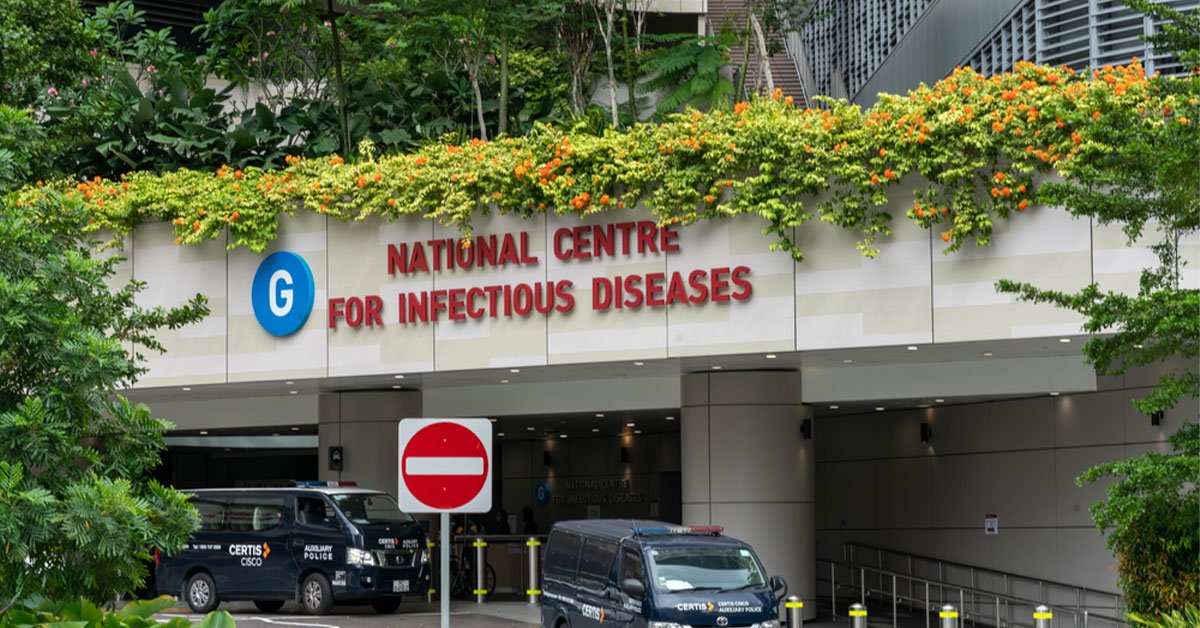I presume you’d go, “Simi sai!?” at the headline.
This could only mean one thing: you’ve not read our article about flattening the curve or you’re simply angry at everything the authorities are doing.
If you belong to the latter, read on because you’d soon understand that this virus is also a business / job killer rather than being just a regular people killer.
If you belong to the former, then take a look at this cat to calm down:

Oh, sorry, wrong cat. This cat:

So, before anything, you need to understand a little about this curve that everyone’s talking about:

Three months into the COVID-19 outbreak, every country’s goal is no longer to contain the virus anymore—that is now impossible.
Instead, the goal is to let it spread longer and not faster.
You see, it’s just like a sale in a department store.
If you put all the sale items in the shop before the shop opens, everyone’ll rush in when the doors are open, and the entire store might collapse as the place can’t handle so many people at one go.
However, if you release the sale items every hour (like social distancing in the COVID-19 outbreak), a small number of people would come in every hour, and the store won’t collapse.
Now, in both scenarios, the same number of people and same number of products were sold, but in the first scenario, the shop collapsed while in the second one, it’s more controlled.
It’s the same idea in the fight against COVID-19—the goal is to ensure that healthcare capacity won’t be overwhelmed that led to serious repercussions, just like in Italy whereby doctors have to decide who gets to live or die simply because they don’t have enough beds.
That’s the agak agak explanation and if you want to know more, you can read this article or watch this video:
So, moving on, now you understand the headline.
But before that, the context.
Singapore is Prepared for a Steep Curve Since the Beginning
Who runs Singapore? Singaporeans. So you can bet during this situation, the kiasu-ness in them works on overdrive.
Right from the beginning of the outbreak, you’d have heard the authorities talking about how Singapore is prepared for more cases: beds are freed up, hospitals stopped accepting non-critical conditions and foreigners could no longer seek treatment here for non-emergency treatments.
Even foreigners who had the virus here were sent to private hospitals, which are now prepared to take in more patients, too.
Yesterday, it was revealed that patients who are well but still have the virus in them would be sent to chalets isolation facilitates instead being warded in a public hospital.
Still can’t tell what’s the objective?
It’s a move to ensure that even if a spike occurs and our relatively flat curve becomes steep, our healthcare capacity isn’t hit too much and lives can still be saved.
To use the previous example of a department store sale, what we’re essentially doing is to move the sale items to another place—that place might not have air-con but it still works.
So if there’s a crowd that rushes in, the shop won’t collapse.
Today, Health Minister Gan Kim Yong spoke about this issue.
Singapore No Longer Isolating All COVID-19 Patients in Hospitals
Previously, any patient who was tested positive, even if they exhibited no symptoms, would be admitted to an isolation ward in a public hospital until they were tested negative twice for the virus in 24 hours.
Advertisements
That was because no one knew what effects the virus had on the body.
But now that we’ve more data, we know that the effects of the virus on 80% of COVID-19 patients are mild or moderate. They definitely don’t need a ward there.
Which’s why now, not all patients would be isolated (using the word “treated” is way too strong, don’t you think?) in public hospitals, but also in other places like private hospitals or Government Quarantine Facilities (those chalets or hostels that were initially turned into quarantine zones).
Of course, people whose conditions are worse (i.e. the elderly or people with underlying health conditions) would still stay in public hospital.
So why is this goody and smart?
Advertisements
Flattening the Curve By Changing the Word
You see, we’re used to this graph:

Instead, what Singapore has done is to turn it into this:

Though before you call us fake news, do note that we’re not at that curve yet…but Singapore is prepared for it.
If that’s not a smart move, then I dare you to come out with a better one.
Reader Bao: Like, erm, building a hospital in days?
That one China level, we cannot fight.
But now, even when we’re smart…
Advertisements
“Don’t Get Complacent”
While a solution is in place for a steep curve, the Health Minister has said that we should not get complacent.
He said in response to questions from MPs from Parliament today, “While we still have sufficient capacity in our healthcare system today, we cannot be complacent and we will need to preserve our buffer capacity.”
So now you know why sometimes, it’s not too bad to be kiasu or kiasi.


